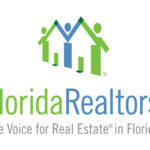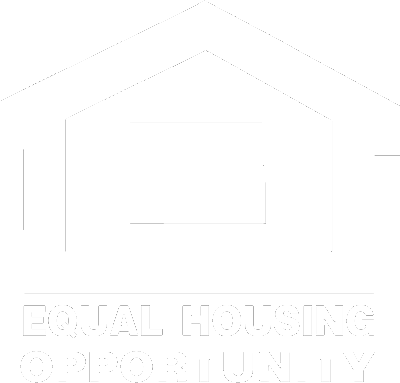U.S. home prices rose 4% compared to the last quarter of 2022, hitting $378K. But only 18% of metro markets saw double-digit growth in 4Q. In 3Q, it was 46%.
WASHINGTON – About nine out of 10 U.S. metro markets registered home price gains in the fourth quarter of 2022 despite mortgage rates eclipsing 7%, according to the National Association of Realtors®’ (NAR) four quarter (4Q) report for 2022.
Of the 186 metros tracked, 18% saw double-digit price increases over the same time period, down from 46% in the third quarter of 2022.
Year-to-year, the national median single-family existing-home price rose 4.0% to $378,700. Year-over-year price appreciation decelerated compared to the previous quarter’s 8.6%.
“A slowdown in home prices is underway and welcomed, particularly as the typical home price has risen 42% in the past three years,” says NAR Chief Economist Lawrence Yun. He bases that on housing costs that have far surpassed wage increases and consumer price inflation of 15% and 14%, respectively, since 2019.
Among the major U.S. regions, the South saw the largest share of single-family existing-home sales (45%) in the third quarter, with year-over-year price appreciation of 4.9%. Prices grew 5.3% in the Northeast, 4.0% in the Midwest, and 2.6% in the West.
“Even with a projected reduction in home sales this year, prices are expected to remain stable in the vast majority of the markets due to extremely limited supply,” Yun says. “Moreover, there are signs that buyers are returning as mortgage rates decline, even with inventory levels near historic lows.”
The top 10 metro areas with the largest year-over-year price increases all recorded gains of at least 14.5%, with seven of those markets in Florida and the Carolinas. Those include:
- Farmington, N.M. (up 20.3%)
- North Port-Sarasota-Bradenton, Fla. (19.5%)
- Naples-Immokalee-Marco Island, Fla. (17.2%)
- Greensboro-High Point, N.C. (17.0%)
- Myrtle Beach-Conway-North Myrtle Beach, S.C.-N.C. (16.2%)
- Oshkosh-Neenah, WI (16.0%)
- Winston-Salem, N.C. (15.7%)
- El Paso, Texas (15.2%)
- Punta Gorda, Fla. (15.2%)
- Deltona-Daytona Beach-Ormond Beach, Fla. (14.5%)
Half of the top 10 most expensive markets in the U.S. were in California, including:
- San Jose-Sunnyvale-Santa Clara, Calif. ($1,577,500; -5.8%)
- San Francisco-Oakland-Hayward, Calif. ($1,230,000; -6.1%)
- Anaheim-Santa Ana-Irvine, Calif. ($1,132,000; -1.6%)
- Urban Honolulu, Hawaii ($1,090,200; 3.4%)
- San Diego-Carlsbad, Calif. ($857,000; 1.4%)
- Los Angeles-Long Beach-Glendale, Calif. ($829,100; -1.3%)
- Naples-Immokalee-Marco Island, Fla. ($802,500; 17.2%)
- Boulder, Colo. ($759,500; -2.0%)
- Seattle-Tacoma-Bellevue, Wash. ($708,900; 1.3%)
- Barnstable Town, Mass. ($668,100; 4.0%)
Roughly one in 10 markets (11%, or 20 of 186) experienced home price declines in the fourth quarter of 2022.
“A few markets may see double-digit price drops, especially some of the more expensive parts of the country that have also seen weaker employment and higher instances of residents moving to other areas,” Yun adds.
In 4Q 2022, the monthly mortgage payment on a typical existing single-family home with a 20% down payment was $1,969 – a 7% increase from the third quarter ($1,838), but a major surge (58% or $720) year-to-year. Families typically spent 26.2% of their income on mortgage payments, up from 25% in the prior quarter and 17.5% one year ago.
Home affordability
Once again, first-time buyers looking to purchase a typical home encountered unaffordability challenges.
For a typical starter home valued at $321,900 with a 10% down payment, the monthly mortgage payment rose to $1,931, about 7% more than the previous quarter ($1,806) and an increase of almost $700, or 57%, from one year ago ($1,233). First-time buyers typically spent 39.5% of their family income on mortgage payments, up from 37.8% in the previous quarter. A mortgage is considered unaffordable if the monthly payment (principal and interest) amounts to more than 25% of the family’s income.2
A family needed a qualifying income of at least $100,000 to afford a 10% down payment mortgage in 71 markets, up from 59 in the prior quarter. However, a family needed a qualifying income of less than $50,000 to afford a home in 16 markets, down from 17 in the previous quarter.
© 2023 Florida Realtors®
©Florida Realtors®
Source link



